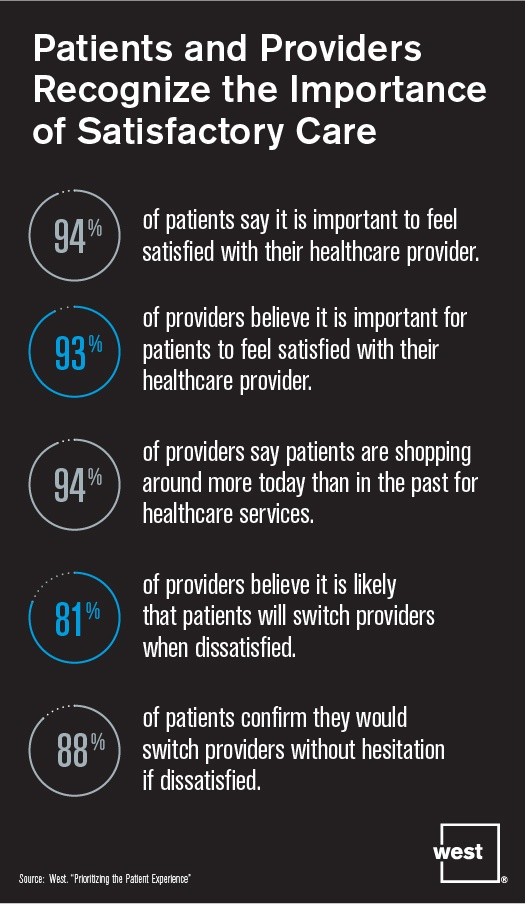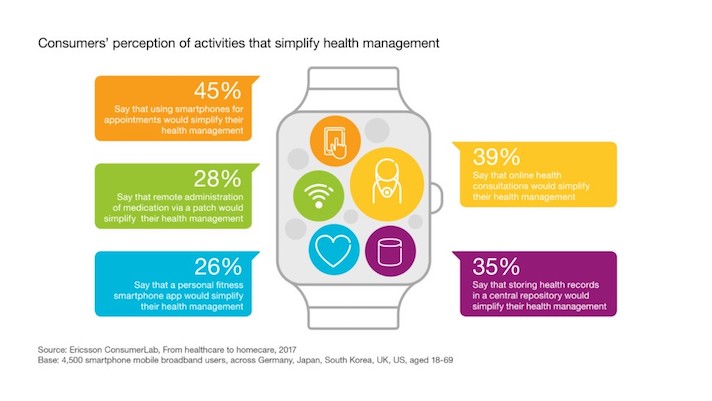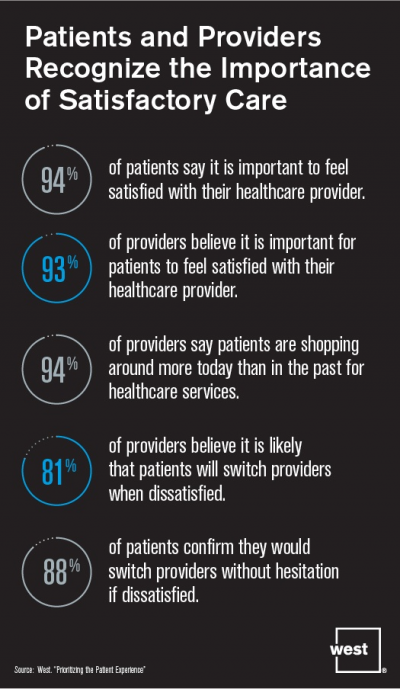 Patient satisfaction should be baked into healthcare provider service goals, according to Prioritizing the Patient Experience from West Corporation, the communications company.
Patient satisfaction should be baked into healthcare provider service goals, according to Prioritizing the Patient Experience from West Corporation, the communications company.
West is in the business of improving communications systems, and has a vested interest in expanding comms in health. This research polled patients and providers to assess how each healthcare stakeholder perceives various patient satisfaction issues, which when done well are grounded in sound communications strategy and technologies.
Patient satisfaction is directly linked to the bottom lines of healthcare organizations, West contends, due to two key drivers:
- Evolving payment models are increasingly tying patient satisfaction to reimbursements; and,
- Increased consumer choice requires providers to meet patients’ expectations, delivering positive care experiences to retain patients and engender positive word-of-mouth from patient-to-patient.
West’s survey found that patients will take action when they are dissatisfied: namely, shopping around for new healthcare providers, or postponing seeing their current doctors or clinics. The younger the patient, the more likely this form of healthcare consumerism will take hold.
Cost still trumps other aspects of healthcare, with 50% of patients seeking healthcare providers who accept their insurance and 49% seeking advance knowledge of healthcare costs.
Other key experience factors beyond cost include consumer expectations of shorter waiting times, high level of expertise to treat illnesses, scheduling ease, improved interpersonal or communication skills, and friendly staff in the provider’s office. Overall, “slow healthcare” is in demand, with unhurried appointments during face-to-face visits in-demand.
More patients dealing with managing chronic health conditions have even higher expectations of healthcare providers for clearer communication, remote health monitoring, and between-visit support for an additional payment (e.g., $10 per month).
 Health Populi’s Hot Points: Underpinning reliable communications are three components: connectivity; technologies; and, smart user-centered design.
Health Populi’s Hot Points: Underpinning reliable communications are three components: connectivity; technologies; and, smart user-centered design.
First, a patient or provider must have access to connections: broadband/WiFi, and faster is better for healthcare. This is the theme of new research from Ericsson, From Healthcare to Homecare, studying the crucial role for 5G networks that enable healthcare communications backbones that are efficient, resilient, and redundant to support, say, real-time robotic surgery, eICU remote monitoring, and virtual stroke care/support at the point of patient trauma.
Second, stakeholders must have access to technologies that range from broad-based platforms that integrate fragmented and siloed providers to mobile apps in patients’ hands.
Finally, the key role of user-centered design to ensure clinicians’ workflow is realistic and productive, and patient-targeted comms and tech are grounded in consumers’ values, cultural mores, and life-flows. The chart illustrates that a first-generation of consumers recognizes the role that digital technology can play to streamline their self-care.
All of this depends on connectivity, to which I’ve been referring as a social determinant of health for years. The FCC has recognized this through the agency’s Connect2Health initiative. Now, networks must proliferate to not only the last mile, but to the last un-connected U.S. health citizen to their preferred healthcare platform: the mobile phone.





 Interviewed live on BNN Bloomberg (Canada) on the market for GLP-1 drugs for weight loss and their impact on both the health care system and consumer goods and services -- notably, food, nutrition, retail health, gyms, and other sectors.
Interviewed live on BNN Bloomberg (Canada) on the market for GLP-1 drugs for weight loss and their impact on both the health care system and consumer goods and services -- notably, food, nutrition, retail health, gyms, and other sectors. Thank you, Feedspot, for
Thank you, Feedspot, for  As you may know, I have been splitting work- and living-time between the U.S. and the E.U., most recently living in and working from Brussels. In the month of September 2024, I'll be splitting time between London and other parts of the U.K., and Italy where I'll be working with clients on consumer health, self-care and home care focused on food-as-medicine, digital health, business and scenario planning for the future...
As you may know, I have been splitting work- and living-time between the U.S. and the E.U., most recently living in and working from Brussels. In the month of September 2024, I'll be splitting time between London and other parts of the U.K., and Italy where I'll be working with clients on consumer health, self-care and home care focused on food-as-medicine, digital health, business and scenario planning for the future...